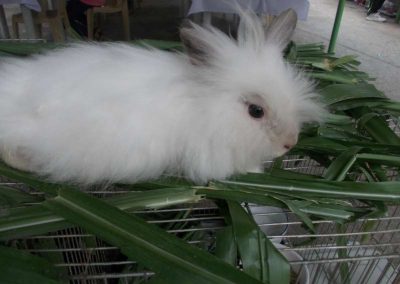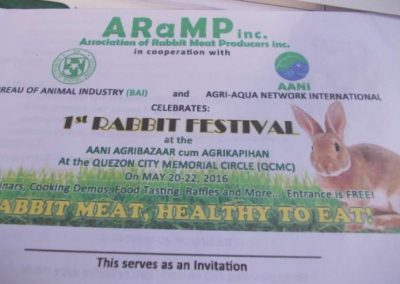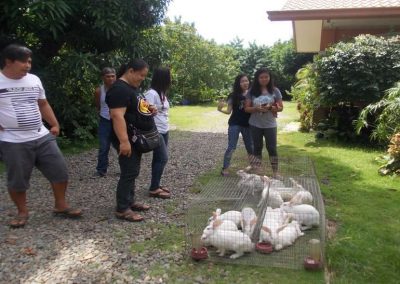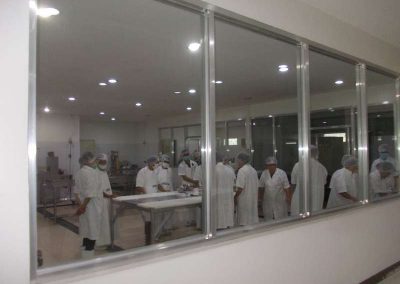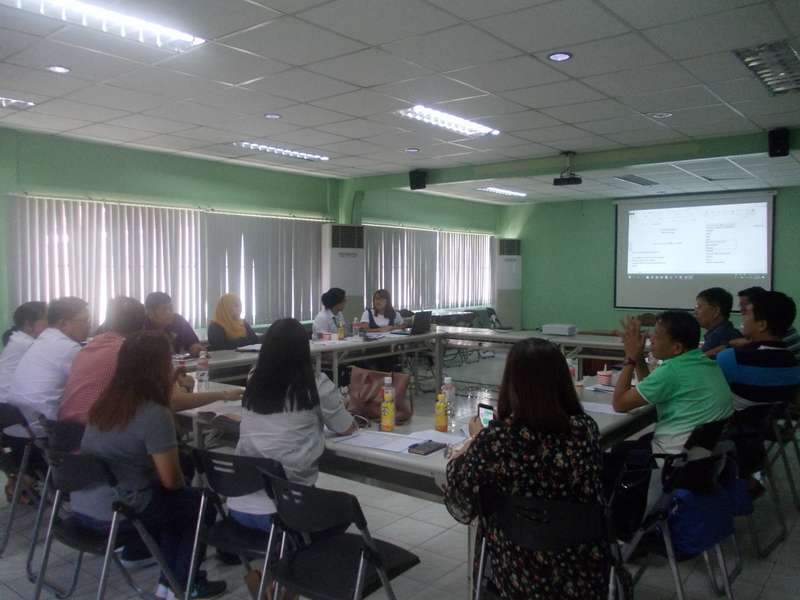In the Philippines, rabbits were introduced by missionary groups and the U.S. Peace Corps after the Second World War. They knew that rabbits grow fast, are prolific and will not compete with humans for grains; making them the ideal protein source that can alleviate food scarcity brought about by the devastations of war.
Small and giant breed rabbits are cared of as pets and are not economically viable to be raised for meat.
Small fancy breeds and giant breeds are raised for pets and are not economically viable to be raised for meat. Medium sized rabbit breeds with a high meat to bone ratio are best suited for meat production. But because of the popularity of rabbits as pet animals, rabbit meat producers are confronted with the challenge of changing mindsets and overcoming constraints to make rabbit meat gain wide consumer acceptance.
Small and giant breed rabbits are cared of as pets and are not economically viable to be raised for meat. The Association of Rabbit Meat Producers, Inc. (ARaMP) since its organization in 2015 persists in its advocacy to make Filipinos know that, with small investment, rabbits can provide protein and income, to both rural and urban households. ARaMP has seen that if managed properly, rabbit production is sustainable and profitable. With proper industry support and consumer awareness, rabbit production can emerge as an important low-cost answer to the problems of hunger, undernourishment and poverty.
ARaMP, addressing the need for support to rabbit raisers advocating rabbit production for human consumption, has since conducted and continues to conduct various seminars and awareness campaigns to overcome cultural and other restraints that limit the consumption of rabbit meat. Membership to the association has since grown all over the country and even those raising rabbits for pets are already showing interest in meat production and showing readiness to partake of the healthy meat.
In 2016, the 1st Rabbit Festival was held with the theme “Rabbit Meat, Healthy to Eat”. The 2nd Rabbit Festival followed in 2017, with the theme “Healthy and Happy with Rabbit Meat”. Also in 2017, the 1st Rabbit Stakeholders’ Forum was held. In this forum, the rabbit raisers’ experiences were gathered and raised to theoretical levels to outline plans and guides for more successful rabbit raising enterprises.
Indeed, rabbit meat has gained increased popularity and acceptance as can be gleaned in the larger market demand for rabbit meat nowadays. Complementing ARaMP’s information effort is a growing health conscious populace that has increased purchasing power and is in the look-out for alternative protein source. (In its forecast made in 2012, the Philippines was listed by Chatham House as among the countries with fastest growing meat consumption).
ARaMP members and rabbit raisers from Bulacan and nearby provinces, in order to consolidate supply of rabbit meat and to be able to meet market demand, has established the Rabbit Raisers and Meat Producers Cooperative (RRMPC). The cooperative aims to give support to rabbit meat producers in their logistical and marketing needs. Parallel to material support, members are given a continuing education to the values of cooperativism to avoid the dog-eat-dog business culture of competition that may be detrimental to the growth of the sunshine industry.
Rabbit is all white meat and classified as poultry.
Trainings on Rabbit Raising and Processing continues to be held with the support of the
BAI- Animal Product and Development Center in Marulas, Valenzuela.
With ARaMP representing the private sector.
Although the Roadmap is still pending finalization and approval, ARaMP has already started its implementation in its private capacity. The increased production of rabbits, calls for a rabbit slaughter house that is conforming to international standards. In anticipation of the production volume for the local as well as the export market, ARaMP has sought the help of the National Meat Inspection Service (NMIS) for the development of specifications and design of a slaughter house facility in conformity with international standards. ARaMP in a meeting with Director Ernesto S. Gonzales and the NMIS key officials presented the rabbit industry need for a slaughter house. Dir. Gonzales and the NMIS officials acknowledged ARaMP’s initiative and responded positively. Rabbitries in centers of production in Bulacan and Cavite were visited to assess the industry requirement. NMIS pledged to work with ARaMP to put industry standards in place.
In anticipation for the rabbit industry need for support and veterinary services, ARaMP visited state universities and colleges to ask them to revisit their curriculum to include rabbit production. BASC was among the first to respond and will soon offer subjects on rabbit production.
ARaMP and BASC have entered into a Memorandum of Agreement to collaborate on programs that will help grow the rabbit industry in the Philippines. It has set up its rabbitry at the BASC campus for research and training. BASC’s slogan “Karne ng Kuneho para sa Kalusugan at Kabuhayan” will be the theme of the 1st Rabbit Congress in the Philippines to be collaborated on by ARaMP and BASC. Also in the pipeline is the establishment of a Rabbit Research Center at BASC.
Rabbit meat was declared by the U.S. Department of Agriculture as the “healthiest meat available to man”. Studies show that compared to other meat, rabbit meat has the lowest fat, lowest cholesterol, lowest calories but has the highest protein content. (Circular #549 USDA Washington DC)
In the Philippines, although rabbits have long been listed as livestock, there are still, insufficient programs and standards to support industry growth. Filipinos should not be deprived consumption of this healthy meat, due to perceived lack of standards and humane procedures. It is imperative that the ARaMP initiative to grow this industry, that may well be the answer to food security and good nutrition in the Philippines; be extended its needed support and encouragement from government as well as the private sector.
This article was first published at the Agriculture Magazine (MB)
November 2019 Issue
With some revisions by author.
Angie M. Veneracion




